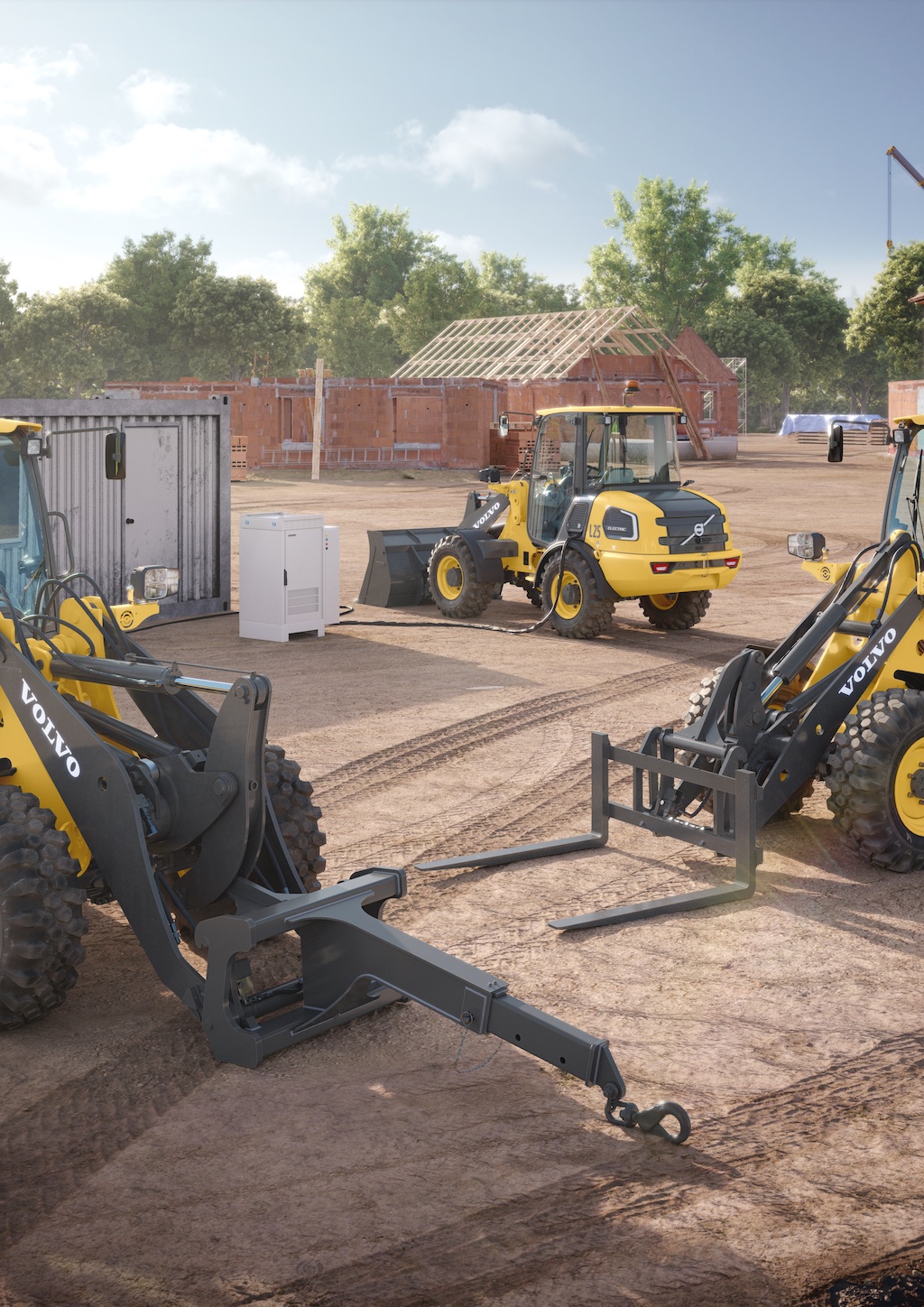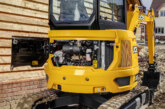Construction Plant News continues its focus on the machines and solutions on show at the Volvo Days event
The Eskilstuna site in Sweden which plays host to the Volvo Days event features 66,000 sq m of testing track with the vast Volvo Construction Equipment range represented at every turn. The Swedish manufacturer is ploughing huge levels of investment into electrification and the consequence is a whole series of innovations in the compact class. In fact, the company can now point to the largest range of electric solutions on the market, and it is a continually expanding family of products.

Electric Excavators
First launched in 2020, the Volvo Days event showcased the 2.5 tonne ECR25 Electric, for example, as well as the newly launched EC18 conventional and EC18R Electric with reduced tail. The former is available with a heated cab or canopy, a battery capacity of 20kW hours, and a run time of between 3-5 hours depending on application.
The EC18R short radius has a 12mm overhang at the rear, whilst the front right corner will stay within the frame when rotating. It is available with canopy only, boasts a 16kW hour battery capacity, with a runtime between 2 – 4 hours depending on application. Both machines are compatible with Volvo’s range of fast chargers, which allows charging from 0-80 per cent in just over an hour.
If a wholesale switch to battery-powered equipment is to become a reality then the planning of a project will need to accommodate their use at the earliest stage, with the provision of electricity on site a prerequisite. That will require a change of mindset but there are considerable rewards.
When electric machines are discussed it is invariably zero emissions, their use in LEZs, working in indoor areas, and sensitive locations – such as around schools and hospitals – that is discussed. These are, of course, paramount but end users often cite one other feature as a particular favourite. The benefits of low noise for operators – and pedestrian workers around the machine – cannot be underestimated, not just from the improvement to the working environment and surrounding area for site personnel and the public alike, but also in the added safety of being able to easily communicate with co-workers.

Wheel Loaders
The electric theme continues with the L20 and L25 Electric wheel loaders. The first and smaller of these offers a 1.8-ton payload and comes with Parallel-type linkage and a choice of a 33 kWh or 40 kWh battery pack.
The larger L25 now also benefits from a number of new upgrades, including the option to fit a new Parallel linkage, as a complement to the existing Z-type, and an increase in the maximum speed up to 20kph. Volvo actually reports that its battery powered wheel loaders out-perform their diesel siblings in many respects. The L25 Electric is stronger, quieter and quicker to respond, for instance, with more sensitive joystick control. Moreover, an already quiet machine is made even quieter with the introduction of a new hydraulic pump and the relocation of the Main Control Valve from the cab to the front frame.
Excavators
Accelerating up the weight scale, and on more familiar internal combustion engine ground, the 50-tonne EC530E and EC550E are entirely new units in the portfolio. Both are what the manufacturer describes as shared platform machines in that utilise the same upper structure. Powered by a D13J Volvo engine, and a with a robust 60-tonne class undercarriage, there’s also a completely new hydraulic system. Here, both machines are fitted with what Volvo calls Independent Metering Valve Technology, an electronically controlled system that offers more precise operation and efficiency than a traditional mechanically coupled hydraulic system.
The 35-tonne Volvo 350E is a new size of excavator for the manufacturer with additional options and components, not least the D8M Volvo engine. That powertrain features a maximum 1,600 rpm, but with very high torque, which can improve fuel efficiency by up to 10 per cent – depending on application – but still deliver the required power.

Wheeled Excavator
With the EWR130E Volvo is promising a more powerful and yet more compact class of wheeled excavator. It’s a multi-tasking tool in the 13-tonne weight class that will equally be at home on infrastructure and highways projects as in landscaping. A reduced centre of gravity means the unit can 4.3tonnes and 6metre reach, whilst in-line outriggers means it can be stabilised within a compact footprint.









